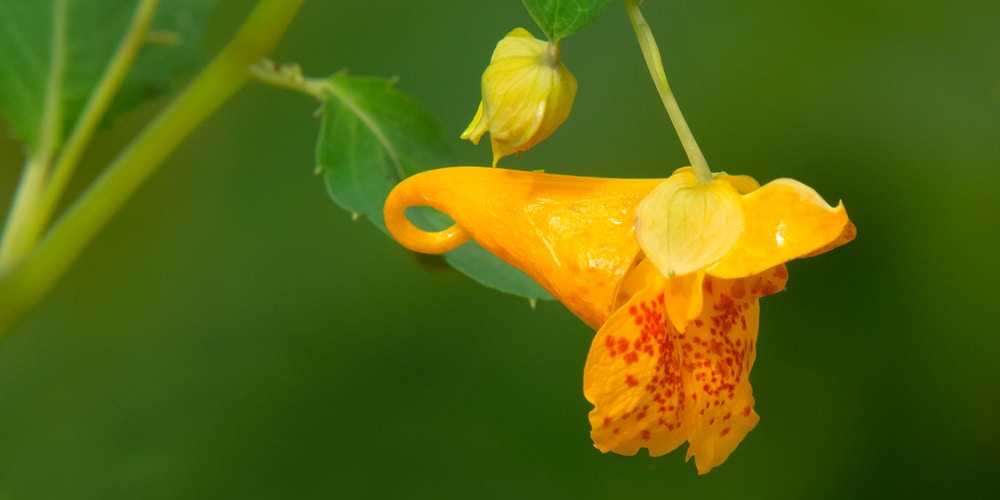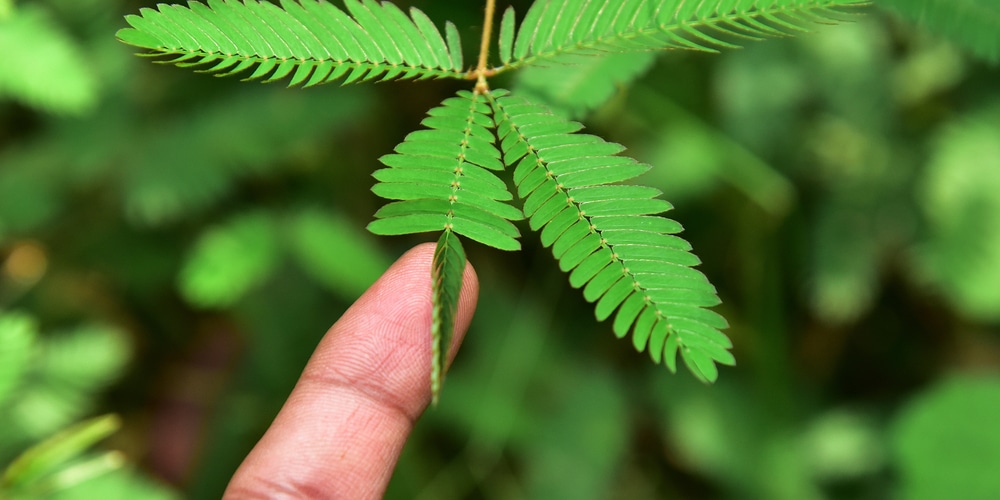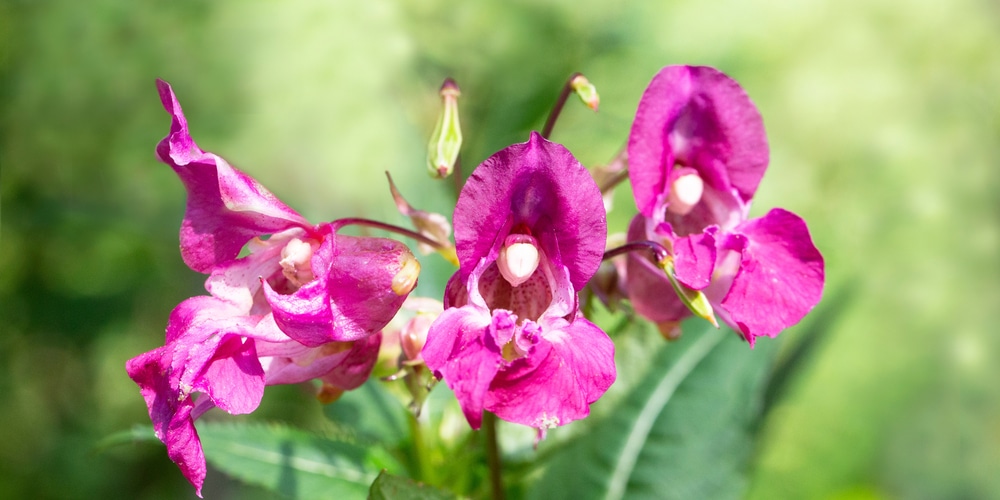With a name like ‘touch me not’, you’d think that the plant is toxic or poisonous, but this isn’t the case. It’s actually one of the most interesting mimosa plants around, often ignored or thought of as an ordinary weed.
So, why is the touch me not plant called as such, and why is it called that way? Let’s take a closer look at the mimosa’s mechanism and how you can harness this versatile plant in your garden or landscape.
Is Touch Me Not Plant Poisonous?
Touch-Me-Not is a misunderstood plant variety that’s unfortunate enough to have that name. However, you should know that the Touch Me Not Plant is not poisonous or toxic to pets and humans.
Mimosa pudica is a low-growing and creeping plant that belongs to the pea family. It has several other names, such as sleepy plant, shameplant and sensitive plant, among others.
The reason why the plant is called ‘touch me not’ is not because it’s poisonous, but rather has a curious self-defense mechanism.
The word ‘pudica’ is Latin for ‘shy’, which should give you an idea of why the plant is called that way. If you’re fortunate enough to spot one in the wild, then you’ll know that you can touch the plant and not suffer from any adverse effects.
What Happens If You Touch the Touch-Me-Not Plant?
Mimosa pudica has small, fern-like leaves that fan out invitingly to viewers. They’re pretty enough that you’ll want to touch them, but then something will happen when you do.
The sleepy plant will close its leaves when they’re disturbed or touched. The foliage collapses on itself, and the stems might also drop in the process. The interesting thing is that the mimosa species will close its leaves faster the greater the impact.
Touch Me Not, when disturbed, will release chemicals that cause the leaves to fold quickly. It’s a defense mechanism to escape grazing animals or even a wildfire. After a few minutes, the leaves open up and fan out again until they’re disturbed or when night comes.
You may have already encountered a mimosa pudica but didn’t know it. They can be found anywhere and are considered an invasive weed in other countries. Touch-me-not is native to Central America and South America, and bringing one home to your yard or garden makes for an interesting ornamental specimen.
Mimosa plants, the sleepy plant included, tend to close their leaves at night to reduce water loss and to protect their pollen from strong winds. It’s likely a survival instinct and an evolutionary process that kept the plant alive throughout history.
How Do You Take Care of a Touch Me Not Plant?
If you’re looking to have a party trick you can show your friends, then the touch-me-not plant is a good idea. The good news is that it doesn’t take a lot to care for and grow the sensitive plant, as long as you keep a few things in mind.
Touch Me Not has multiple fringed leaves sitting along sturdy stems. When it flowers, the creeping plant produces fluffy blooms that are colored pale pink. Mimosa pudica thrives in full sunlight but it can grow quite well indoors and in a window that gets bright light and partial sun.
Most growers prefer to grow their touch-me-not as a houseplant and as a decorative specimen. The truth is that mimosa pudica can tolerate being in the shade or indoors as long as it gets enough bright light throughout the day. In the yard or landscape, the sleepy plant makes for excellent ground cover and along with other flowering species.
Touch me nots grow quickly, and when left unchecked can overtake other plants that are in its path. That said, you should probably put touch-me-not in a container so you won’t have to deal with an invasive weed when you want to grow other plants.
Here are some general requirements for a Mimosa Pudica.
Light Requirement
Touch Me Not is a plant that’s adapted to different environments, meaning it can thrive in both full sun and shade. The amount of light the plant gets dictates its growth- in full sun, touch-me-nots fill up a space quickly and in the blink of an eye.
When growing the sleepy plant indoors, you should make sure it gets a bright spot in the home or the plant will decline.
Soil Requirement
Mimosa pudica isn’t too particular about soil type and pH. However, the looser the soil the more conducive it is for the plant’s growth.
Loamy and sandy soil works best for Touch Me Not. Although the plant likes regular watering you should put it in a pot that gets adequate drainage to avoid root rot and fungal diseases.
Watering Requirement
Mimosa pudica likes constantly moist soil that doesn’t stay wet for more than a day or two. Watering can be a bit tricky since you don’t want the entire pot or container to dry out (since it can kill the touch-me-not).
Check the soil using your finger to see if your plant needs watering. On hotter days and during the summer season you may need to give your Touch Me Not more water.
Related Article: Is Pokeweed Poisonous To Touch?


